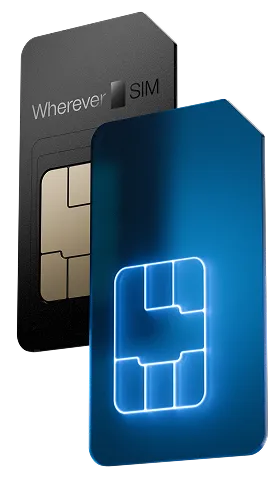eUICC / embedded Universal Integrated Circuit Card
Software on a SIM card that makes it possible to save multiple profiles and manage them remotely (OTA, Over The Air). It is the basis for the eSIM functionality.
eSIM / embedded SIM
Physical SIM card in a permanently soldered form factor (MFF2) or as a classic plastic SIM (2FF/3FF/4FF) equipped with eUICC software. In common parlance, "eSIM" is often used synonymously with eUICC, but technically it is the hardware term.
RSP / Remote SIM Provisioning
Procedure for loading, activating, blocking and deleting mobile phone profiles remotely. RSP is the core functionality of eUICC.
SM-SR / Subscription Manager Secure Routing
instance in the M2M architecture (SGP.02). It is responsible for the secure transfer of profiles to the eUICC SIM and for managing them.
SM-DP / Subscription Manager Data Preparation
Prepares the SIM profile and encrypts it before it is sent to the eUICC. Separate from the SM-SR function in the M2M standard.
SM-DP+ / Subscription Manager Data Preparation +
Further development in the consumer standard (SGP.22). Combines the tasks of SM-DP and SM-SR in a single instance.
LPA / Local Profile Assistant
Component in the consumer standard (SGP.22). Sits in the end device (e.g. smartphone) and serves as an interface between the user and eUICC to install or change profiles.
ISD-R / Issuer Security Domain Root
Higher-level security area on the eUICC that controls the installation and management of profiles.
SGP.31 / eSIM IoT architecture specification
Defines the basic architecture of eUICC in the IoT context. Contains roles, interfaces and processes on which SGP.32 is technically based.
SGP.33 / eSIM IoT test specification
Defines the test procedures for IoT-eUICCs (Part 1), devices and IPA (Part 2) and eIM/SM-DP+ platforms (Part 3). Published in January 2025 and enables interoperability and conformance testing for the first time.
BIP / Bearer Independent Protocol
Protocol used in the M2M standard (SGP.02) together with SMS to transport commands to the eUICC. Considered cumbersome and was one of the main reasons why NB-IoT and other low-power technologies had problems with SGP.02.
NB-IoT / Narrowband IoT
Mobile radio technology from the 3GPP family, optimized for energy-efficient, low-cost IoT devices with low bandwidth. Usually only supports SMS to a limited extent, therefore problematic for older eUICC standards.
LTE-M / LTE Cat-M1
Mobile radio technology for IoT, also part of 3GPP Release 13. Supports voice and SMS services in contrast to NB-IoT, but with reduced bandwidth.
OTA / Over the Air
Generic term for wireless transmission methods that can be used to load, activate or delete SIM profiles on an eUICC. Central functionality of Remote SIM Provisioning.
SM-DS / Subscription Manager Discovery Server
Component in the consumer and IoT architecture that refers end devices to the correct SM-DP+. Makes it possible for a device to find and download profiles even without prior configuration.
IPAe / IPAd / IoT Profile Assistant embedded/device:
Software component in the SGP.32 standard that enables the management of eSIM profiles.
- IPAe runs directly on the eUICC.
- IPAd runs on the end device.
- It replaces the LPA (Local Profile Assistant) from the consumer standard.
eIM / eSIM IoT Remote Manager
New central instance in SGP.32 that controls profiles on the eUICC (download, activate, lock, delete). Replaces the SM-SR from the M2M standard and solves the lock-in problem. Previously, companies were tied to a specific network operator, as only this operator could manage the profiles on the eUICC.
PSMO / Profile State Management Operations
Security-critical operations to control the profile status (e.g. activate, lock, delete). In SGP.32, all PSMOs are cryptographically secured to prevent manipulation.
Would you like to delve deeper into the topic?
In our detailed article on SGP.32 we explain how the new GSMA standard is revolutionizing remote SIM provisioning for IoT devices, what the differences are to SGP.22 and why eUICC plays a central role in this.

